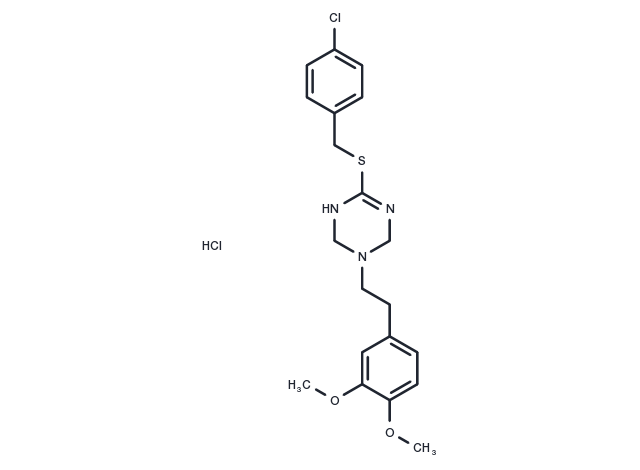Powder: -20°C for 3 years | In solvent: -80°C for 1 year


MAC13243 HCl, an inhibitor of LolA, a periplasmic chaperone that transports lipoproteins from the inner membrane to the outer membrane, is an antimicrobial agent with specificity and significant inhibitory effects on Gram-negative bacteria.

| Pack Size | Availability | Price/USD | Quantity |
|---|---|---|---|
| 1 mg | In stock | $ 122.00 | |
| 5 mg | In stock | $ 297.00 | |
| 10 mg | In stock | $ 438.00 | |
| 25 mg | In stock | $ 716.00 | |
| 50 mg | In stock | $ 997.00 | |
| 100 mg | In stock | $ 1,330.00 | |
| 500 mg | In stock | $ 2,690.00 |

| Description | MAC13243 HCl, an inhibitor of LolA, a periplasmic chaperone that transports lipoproteins from the inner membrane to the outer membrane, is an antimicrobial agent with specificity and significant inhibitory effects on Gram-negative bacteria. |
| In vitro | We investigated the impact of a prototype drug (MAC13243 HCl) interfering with the Gram-negative outer membrane protein LolA on the faecal microbiota. Faecal suspensions from two healthy human donors were exposed to MAC13243 HCl (16, 32, or 64 mg/L) using an in vitro gut model (CoMiniGut). Samples collected 0, 4, and 8 h after exposure were subjected to viable cell counts, 16S rRNA gene quantification and V3-V4 sequencing using the Illumina MiSeq platform. MAC13243 HCl exhibited concentration-dependent killing of coliforms in both donors after 8 h. Concentrations of ≤32 mg/L reduced the growth of aerobic bacteria without influencing the microbiota composition and diversity. An expansion of Firmicutes at the expense of Bacteroidetes and Actinobacteria was observed in the faecal microbiota from one donor following exposure to 64 mg/L of MAC13243 HCl. At all concentrations tested, MAC13243 HCl did not lead to the proliferation of Escherichia coli nor a reduced abundance of beneficial bacteria, which are typical changes observed in antibiotic-induced dysbiosis. These results support our hypothesis that a drug interfering with a specific target in Gram-negative bacteria has a low impact on the commensal gut microbiota and, therefore, a low risk of inducing dysbiosis.[3] |
| Molecular Weight | 442.4 |
| Formula | C20H25Cl2N3O2S |
| CAS No. | 1071638-38-4 |
Powder: -20°C for 3 years | In solvent: -80°C for 1 year
DMSO: 50 mg/mL (113.02 mM), Sonication is recommended.
You can also refer to dose conversion for different animals. More
bottom
Please see Inhibitor Handling Instructions for more frequently ask questions. Topics include: how to prepare stock solutions, how to store products, and cautions on cell-based assays & animal experiments, etc.
MAC13243 HCl 1071638-38-4 Microbiology/Virology Antibacterial MAC-13243 MAC13243 inhibitor inhibit
